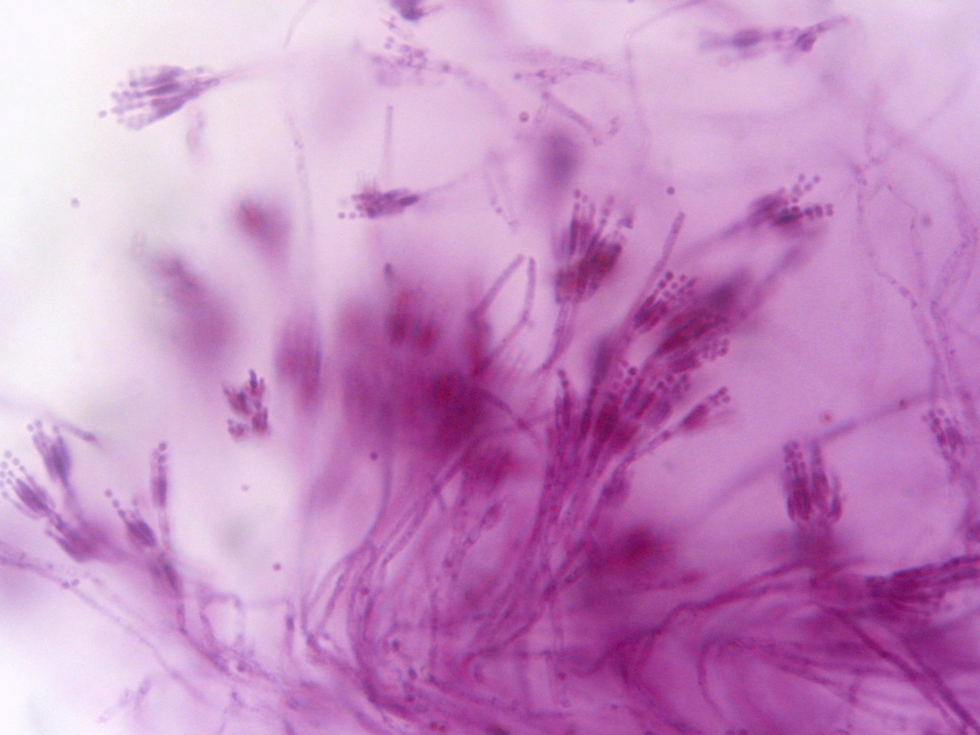Penicillium Species – Complete
- Stanislav M.

- Oct 30
- 3 min read

Information
Penicillium species are among the most widespread and versatile fungi on Earth. Renowned for their pivotal role in medicine, food production, and environmental nutrient cycling, these molds shape industries and ecosystems alike. This guide provides a simple, user-friendly overview of Penicillium species, covering their history, classification, habitats, uses, harmful effects, common species, identification methods, treatment strategies, future prospects, and a concise summary.
Introduction
Penicillium species belong to the phylum Ascomycota and include over 350 scientifically recognized molds. They grow rapidly, often forming blue-green or grayish colonies with brush-like conidiophore structures. While some Penicillium species are celebrated for antibiotic and cheese production, others spoil food or pose health risks in damp indoor environments.
History
Discovery of penicillin (1928): Alexander Fleming observed that a Penicillium species (P. rubens, historically called P. chrysogenum) produced a substance inhibiting bacterial growth. This breakthrough ushered in the antibiotic era.
Food fermentation: Traditional cheese-ripening cultures using P. roqueforti and P. camemberti date back centuries, long before scientific classification.
Taxonomic advances: Molecular techniques in the late 20th century refined Penicillium classification, revealing diverse species with distinct ecological and industrial roles.
Classification
Penicillium species are organized into multiple subgenera and sections based on morphology and genetics:
Subgenus Penicillium: Includes P. chrysogenum (penicillin producer) and P. expansum (fruit spoilage).
Subgenus Aspergilloides: Contains P. camemberti and P. roqueforti used in cheese.
Subgenus Furcatum: Features soil-dwelling species like P. citrinum. Genetic markers such as ITS and β-tubulin sequences distinguish closely related species.
Habitat
Penicillium species thrive in:
Soils and leaf litter: Nutrient-rich, decaying organic matter.
Indoor environments: Damp walls, wallpaper, and HVAC systems.
Food products: Fruits, grains, cheeses, and cured meats.
Industrial settings: Bioreactors for enzyme and antibiotic production.
Uses (Medicine & Industry)
Antibiotic production:
P. chrysogenum produces penicillin, saving millions of lives.indogulfbioag
Food fermentation:
P. roqueforti for blue cheeses and P. camemberti for Camembert and Brie.hyndswastewater
Enzyme production:
Industrial pectinases, cellulases, and proteases from various Penicillium species.
Biocontrol and bioremediation:
P. citrinum solubilizes soil manganese, enhancing nutrient availability in deficient soils.
Secondary metabolites:
Statins, immunosuppressants, and mycotoxins used or studied in pharmaceuticals.
Harmful Effects
Food spoilage: P. expansum causes blue mold rot in apples and pears.
Mycotoxin production: Some species produce patulin, citrinin, and ochratoxin A, contaminating foods and posing health risks.
Allergic reactions: Indoor Penicillium spores can trigger asthma, rhinitis, and hypersensitivity pneumonitis.
Opportunistic infections: Rare cases of invasive infections by P. marneffei in immunocompromised individuals.
Common Penicillium Species
P. chrysogenum – Penicillin producer.
P. roqueforti – Blue cheese ripening.
P. camemberti – Camembert and Brie cheese.
P. expansum – Postharvest fruit rot.
P. citrinum – Manganese solubilizer in soil.
P. italicum – Citrus green mold.
P. marneffei – Human pathogen in Southeast Asia.
Identification
Penicillium species are identified by combining:
Colony morphology: Color range from green to blue-green, texture from velvety to powdery.
Microscopy: Branched conidiophores with metulae and phialides, forming chains of round conidia.
Growth temperature and substrate tests: Species-specific growth rates at 5–37 °C and on media such as Czapek yeast extract agar.
Molecular analysis: DNA sequencing of the internal transcribed spacer (ITS) region and β-tubulin gene.
Treatment (Control & Remediation)
Food industry:
Sanitation, controlled atmosphere storage, and fungicidal treatments (e.g., natamycin) prevent spoilage.
Indoor mold remediation:
Eliminate moisture sources, remove contaminated materials, and apply EPA-registered biocides.
Agricultural soils:
Crop rotation, organic amendments, and beneficial microbial inoculants like P. citrinum enhance soil health while suppressing pathogens.
Human health:
Antifungal drugs (e.g., amphotericin B, itraconazole) for rare invasive infections; allergy management with antihistamines and environmental control.
Future Scope
Novel antibiotics: Mining Penicillium genomes for new antimicrobial compounds to combat resistant bacteria.
Green agriculture: Expanding use of beneficial Penicillium strains for nutrient bioavailability and biological pest control.
Biotechnology: Engineering Penicillium species for improved enzyme yields and novel bioproducts.
Indoor air quality: Development of building materials and coatings that inhibit indoor mold growth including Penicillium.
Simple Summary
Penicillium species are versatile molds with both beneficial and harmful roles. They revolutionized medicine through penicillin, enrich our cheeses, and drive industrial enzyme production. Conversely, they spoil food, produce mycotoxins, and can trigger respiratory issues. Accurate identification and targeted treatment strategies are essential for harnessing their benefits while minimizing risks. Looking forward, Penicillium remains at the forefront of biotechnology, promising new medicines, sustainable agriculture solutions, and improved indoor health standards.
Keywords: Penicillium species, uses, harmful effects, common molds.
Here are four ScienceDirect resources on Penicillium species:
General overview of Penicillium species https://www.sciencedirect.com/topics/agricultural-and-biological-sciences/penicillium
Specific entry for Penicillium citrinum https://www.sciencedirect.com/topics/agricultural-and-biological-sciences/penicillium-citrinum
Chemodiversity and secondary metabolites in Penicillium https://www.sciencedirect.com/science/article/pii/S0960982224012302
Mycorrhizal-like mutualisms involving Penicillium in soil ecosystems https://www.sciencedirect.com/science/article/pii/S221466282400080X



Comments